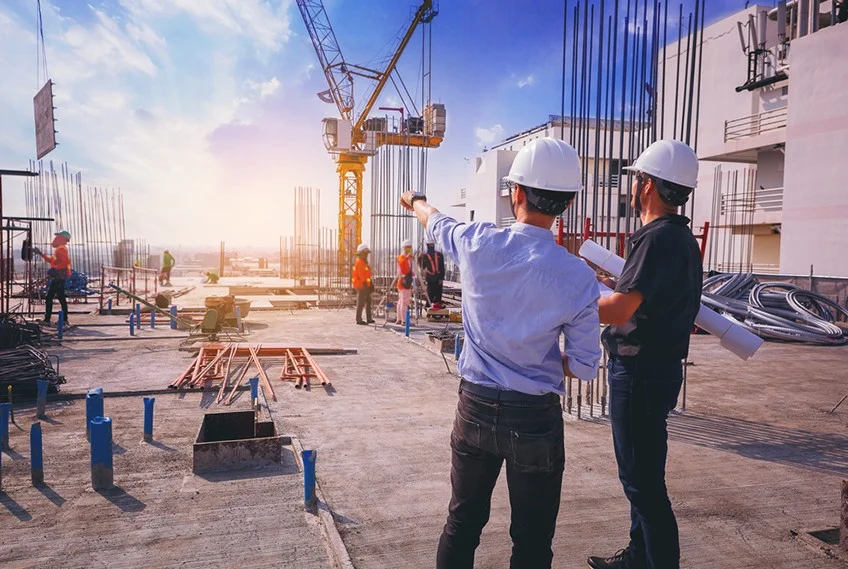Civil Construction
- Home
- Civil Construction

Civil Construction is a branch of civil engineering focused on the design, construction, and maintenance of infrastructure projects that form the foundation of modern society. It includes everything from roads, bridges, and buildings to dams, airports, railways, and water supply systems. Civil construction plays a crucial role in economic development and urbanization, ensuring safe, functional, and sustainable structures.
Key Aspects of Civil Construction
1. Infrastructure Development
o Civil construction encompasses various types of infrastructure such as highways, bridges, tunnels, railways, ports, and airports.
o It also includes essential utilities like water supply systems, sewage networks, and electrical grids, ensuring that cities and communities function smoothly.
2. Urban and Rural Development
o Civil construction is integral to urban development projects like residential buildings, commercial complexes, industrial zones, and public amenities.
o It also involves rural development projects such as the construction of rural roads, irrigation systems, and community centers, improving living standards and connectivity.
3. Sustainable and Green Construction
o Modern civil construction practices focus on sustainability by using eco-friendly materials, energy-efficient designs, and green construction technologies.
o Projects often incorporate sustainable drainage systems, renewable energy sources, and low-impact development practices to minimize environmental footprints.
4. Heavy Civil Construction
o This area involves large-scale projects like dams, levees, mining operations, and power plants. It requires advanced engineering techniques and specialized equipment to manage large volumes of materials and ensure structural stability.
o Heavy civil projects also include the construction of transportation systems like railways, subways, and highways, which are essential for connecting cities and regions.
Types of Civil Construction Projects
1. Residential and Commercial Buildings
o Civil construction companies undertake projects such as apartment buildings, offices, malls, and hotels.
o These projects require coordination between architects, structural engineers, and contractors to ensure safety, functionality, and aesthetics.
2. Transportation Infrastructure
o Roads, highways, bridges, tunnels, airports, and railways are critical components of transportation infrastructure.
o These projects aim to enhance connectivity, reduce travel time, and improve transportation efficiency for goods and people.
3. Water Management Systems
o Civil construction includes building dams, reservoirs, canals, and water treatment facilities to ensure a reliable water supply and flood control.
o Irrigation systems and drainage networks are also developed to support agriculture and manage stormwater in urban areas.
4. Public Infrastructure and Utilities
o Projects like schools, hospitals, government buildings, and community centers are essential to public welfare.
o Utility projects, including power plants, sewage systems, and electrical grids, are fundamental to supporting growing populations and industries.
5. Industrial Construction
o Civil construction extends to the industrial sector, building factories, warehouses, refineries, and other facilities crucial for manufacturing and production.
o These projects require precise planning and construction to ensure efficiency, safety, and compliance with regulations.
Civil Construction Phases
1. Planning and Design
o The initial phase involves site surveys, feasibility studies, environmental assessments, and project planning. Civil engineers and architects collaborate to design the project, ensuring it meets safety codes, functionality requirements, and aesthetic preferences.
o Budgeting, scheduling, and obtaining permits and approvals from local authorities are also key components of this stage.
2. Site Preparation
o Before construction begins, the site is prepared through activities like land clearing, excavation, grading, and leveling.
o Foundations are laid, and utilities like water, power, and sewage systems are installed to support the construction process.
3. Construction
o The actual building phase involves executing the design plan using materials like concrete, steel, and masonry. This stage includes the construction of structural elements such as foundations, columns, beams, walls, and roofing.
o Site engineers, project managers, and skilled laborers work together to ensure that construction adheres to specifications, quality standards, and safety protocols.
4. Quality Control and Safety Management
o Throughout the construction phase, quality control measures are implemented to ensure materials and workmanship meet design and regulatory standards.
o Safety management practices, including protective equipment, safety training, and hazard monitoring, are essential to prevent accidents and injuries on site.
5. Project Completion and Inspection
o After construction is completed, a thorough inspection is conducted to verify that all components meet structural, safety, and regulatory requirements.
o The project is then handed over to the client, and any necessary maintenance guidelines are provided for long-term upkeep.
Advantages of Civil Construction
1. Infrastructure Development: Civil construction drives economic growth by providing essential infrastructure that supports industries, trade, and connectivity.
2. Urbanization Support: It plays a key role in the expansion and modernization of urban areas, facilitating residential, commercial, and public space development.
3. Environmental Management: Incorporating sustainable practices helps reduce environmental impact, ensuring that projects meet modern standards for eco-friendly construction.
4. Job Creation: Civil construction projects generate employment opportunities across various skill levels, from engineers and architects to skilled labor and machine operators.
5. Technological Integration: Modern civil construction integrates technology such as Building Information Modeling (BIM), drones for site surveys, and advanced machinery, enhancing efficiency, safety, and precision.
Challenges in Civil Construction
1. Environmental Impact: Large-scale construction projects can disrupt ecosystems, lead to deforestation, or cause pollution if not managed responsibly.
2. Regulatory Compliance: Navigating building codes, safety regulations, and environmental laws can be complex and may impact timelines and costs.
3. Project Delays: Factors such as weather, labor shortages, and supply chain issues can delay project completion, affecting budgets and schedules.
4. Safety Concerns: Construction sites are inherently dangerous, and maintaining safety standards is critical to preventing accidents and ensuring the well-being of workers.
Trends in Civil Construction
1. Sustainable Building Practices: Emphasis on green building certifications, using sustainable materials, and incorporating renewable energy solutions.
2. Technology Integration: Use of BIM, AI, drones, and robotics for efficient planning, monitoring, and construction management.
3. Modular and Prefabricated Construction: Increasing use of off-site manufacturing to speed up construction times and reduce on-site waste.
4. Resilient Infrastructure: Designing structures that withstand natural disasters such as earthquakes, floods, and hurricanes, ensuring community safety and longevity.
Civil construction is the backbone of modern infrastructure development, providing essential facilities and structures that support everyday life and economic growth. By embracing innovation, sustainability, and efficiency, the industry continues to evolve, shaping cities and communities worldwide.
